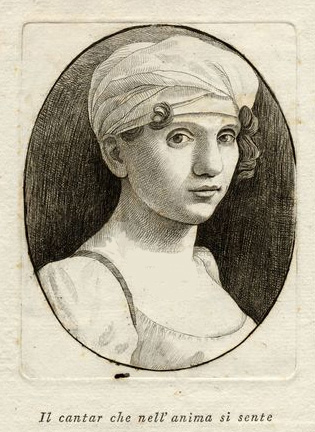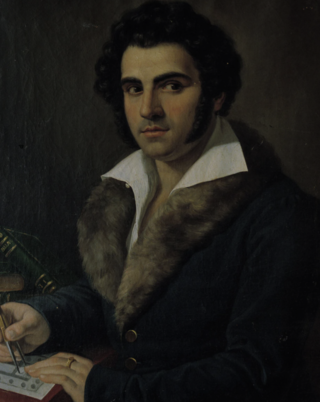
Pistoia is a city and comune in the Italian region of Tuscany, the capital of a province of the same name, located about 30 kilometres (19 mi) west and north of Florence and is crossed by the Ombrone Pistoiese, a tributary of the River Arno. It is a typical Italian medieval city, and it attracts many tourists, especially in the summer. The city is famous throughout Europe for its plant nurseries.
The Accademia dei Lincei, anglicised as the Lincean Academy, is one of the oldest and most prestigious European scientific institutions, located at the Palazzo Corsini on the Via della Lungara in Rome, Italy. Founded in the Papal States in 1603 by Federico Cesi, the academy was named after the lynx, an animal whose sharp vision symbolizes the observational prowess that science requires. Galileo Galilei was the intellectual centre of the academy and adopted "Galileo Galilei Linceo" as his signature. "The Lincei did not long survive the death in 1630 of Cesi, its founder and patron", and "disappeared in 1651".
The Accademia degli Arcadi or Accademia dell'Arcadia, "Academy of Arcadia" or "Academy of the Arcadians", was an Italian literary academy founded in Rome in 1690. The full Italian official name was Pontificia Accademia degli Arcadi.
Beyond Florence, there are nine other provinces in the region of Tuscany, named for the largest city in, and capital of, the respective province. Taken together, they offer an intense musical life.

Teodulo Mabellini was an Italian composer.
The Accademia Filarmonica di Verona is an academy dedicated to the performance and study of music, founded in 1543 in Verona, Italy. At its founding it consisted of a group of young noblemen with humanistic and literary inclinations, who were also musical amateurs, coming together to perform and study music. While it was not the first academy in Renaissance Italy – many academies were formed during the Renaissance to discuss intellectual, cultural, and humanistic issues – it was the earliest specifically musical academy of the Renaissance.

Elisabetta Manfredini-Guarmani was an Italian opera singer best known for having created the leading soprano roles in four of Rossini's operas, roles which he wrote specifically for her voice. She was born Antonia Elisabetta Manfredini in Bologna and was the daughter of the composer and music theorist Vincenzo Manfredini. After her stage debut in 1810 when she sang in the premiere of Stefano Pavesi's Il trionfo di Gedeone at Bologna's Teatro del Corso, she went on to perform at La Fenice, La Scala, Teatro Regio di Torino, Rome's Teatro Argentina and several other opera houses, primarily in Northern Italy. In addition to the roles she created in Rossini's operas, she also sang in the world premieres of operas by several composers who are lesser known today, including Pietro Raimondi, Simon Mayr, and Ferdinando Paër. Her last known appearance was in 1828 after which there is no further trace of her. The date and place of her death are unknown.
The following is a timeline of the history of the city of Siena, Tuscany, Italy.
Tito Azzolini was an Italian architect, active mostly in or near Bologna.
Accademia often refers to:

The Teatro Alfieri was a major theatre and opera house in 18th and 19th century Florence, located at Via dell'Ulivo #6 corner Via Pietrapiana in the Florence, region of Tuscany, Italy.
Bartolomeo Valiani was an Italian painter.

The Teatro dei Rozzi is a live-performance theater located on Piazza Indipendenza #15, in the city of Siena, region of Tuscany, Italy; while this structure was inaugurated in 1817, the sponsoring organization dated to 1531.
The following is a timeline of the history of the city of Perugia in the Umbria region of Italy.
The following is a timeline of the history of the city of Pistoia in the Tuscany region of Italy.
The Rospigliosi Music Collection is a collection of musical documents preserved in two institutions in Pistoia, Italy: the Archive of the Chapter and the Forteguerriana Library.

Music collections in Pistoia show a chronological profile of the musical production of the city.

Niccolò "Nicola" Matas was an Italian architect and professor. He is best known for being the architect of the 19th century Gothic Revival façade of the Basilica of Santa Croce in Florence, Italy. Matas was a professor at the Academy of Fine Arts, Florence. He is one of the important architects in the history of the city of Florence.
Cosimo Rossi Melocchi was an Italian Neoclassical architect and printmaker.






